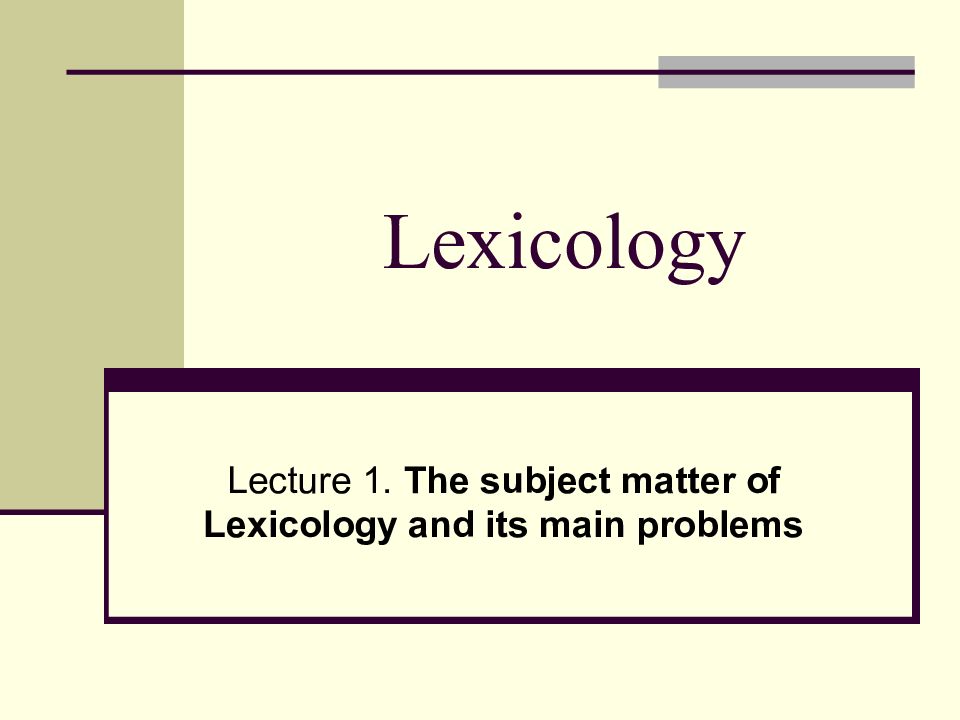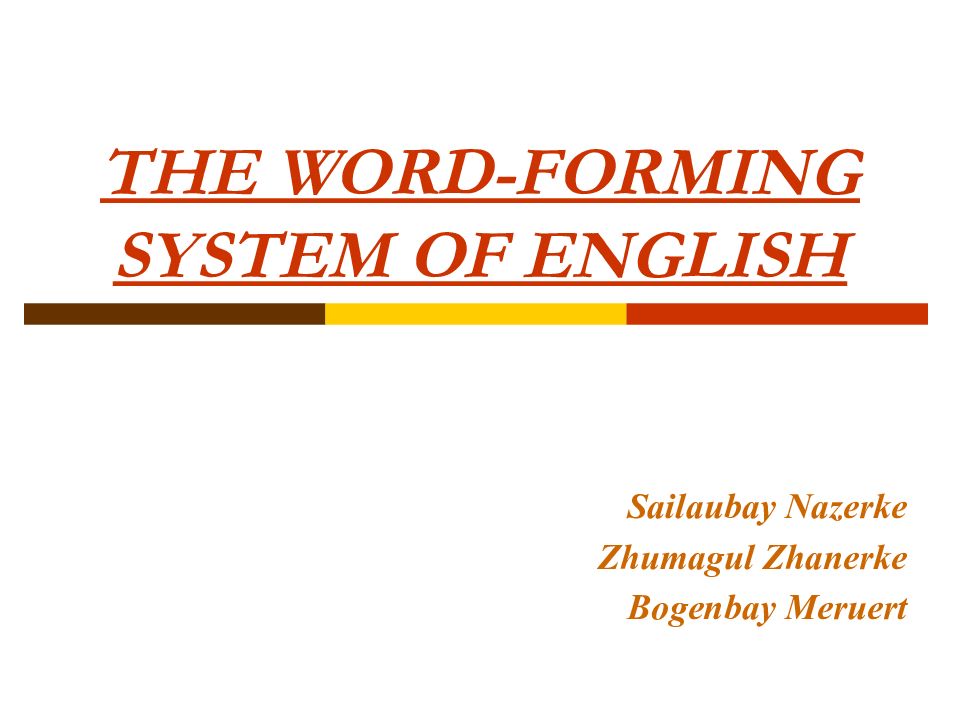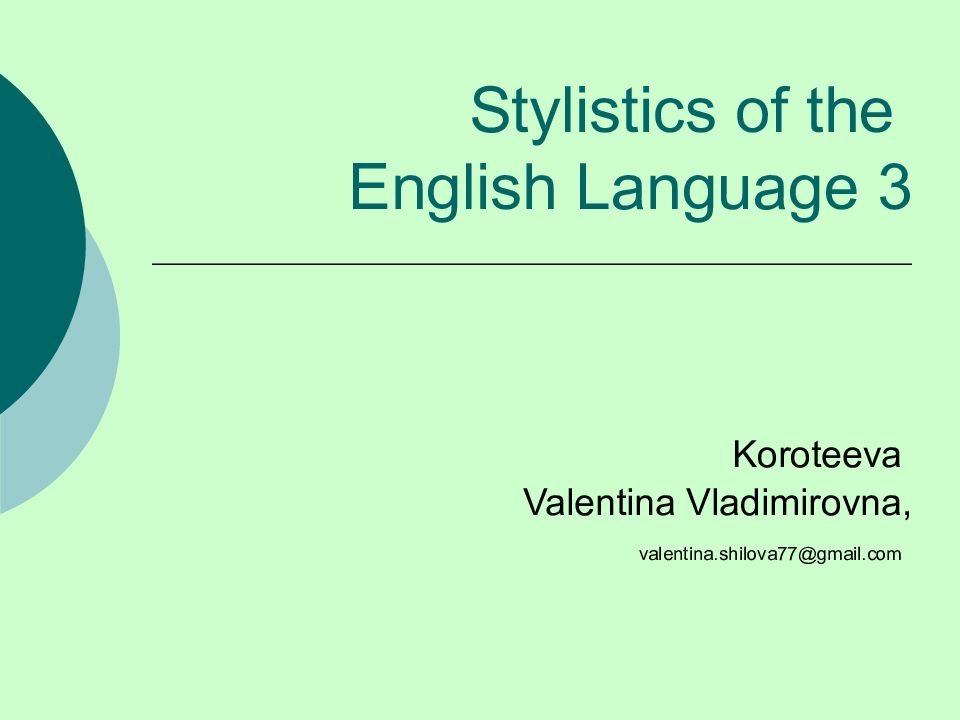Слайд 2: Outline of the lecture:
Definition of Synonyms and their Classification Definition of Antonyms and their Classification Definition of Homonyms and their Classification
Слайд 3: Synonyms
are two or more words of the same meaning, belonging to the same part of speech, possessing one or more identical meaning, interchangeable at least in some contexts without any considerable alteration in denotational meaning, but differing in morphemic composition, phonemic shape, shades of meaning, connotation, affective value, style, and emotional coloring peculiar to one of the elements in a synonymic group.
Слайд 4: Classification of synonyms
V.V. Vinogradov classified synonyms into: ideographic words conveying the same notion but different in shades of meaning (ex., battle/fight) stylistic synonyms – words differing in stylistic characteristics (ex., to put off/to postpone) absolute synonyms – words coinciding in all their shades of meaning and stylistic characteristics (ex., pilot - airman — flyer – flyingman; screenwriter - scriptwriter - scripter – сценарист; semasiology – semantics.)
Слайд 5: G.B. Antrushina’s approach:
the connotation of intensity (ex., to shout-to yell- to bellow- to roar) emotive connotation (ex., alone-single-lonely-solitary) evaluative (ex., to sparkle – to shine with amusement, good humour and happiness, to glitter – to shine with anger, hatred, malice) stylistic connotations (ex., snack-refreshment-feast) the connotation of duration (ex., to shudder – brief action, to shiver – lasting action) causative (ex., to blush – from modesty, shame, embarrassment, to redden – from indignation) connotation of manner (ex., to stroll-to trot-to pace-to stumble) connotation of attendant circumstances (ex., to pip – through a hole, to peer – in darkness or through the fog) connotation of attendant features (ex., beautiful – associated with classical features and figure, pretty – associated with some small delicate features and a fresh complexion)
Слайд 6: The synonymic dominant
expresses notion common to all synonyms of the group in the most general way without contributing any additional information to the manner or intensity of the referent (ex., to look – synonymic dominant of “pip, peer, stare”). Characteristics of the dominant: high frequency of usage, broad combinability – ability to be used in combinations with various classes of words broad general meaning lack of connotation.
Слайд 7: Antonyms
are two or more words of the same language belonging to the same part of speech and to the semantic field identical in style and nearly identical in distribution associated and used together so that their denotative meaning renders opposite notions.
Слайд 8: Classification of antonyms
According to the type of notion they express: Contradictory antonyms express mutually opposed and denying one another notions. (Ex. married=not single; male=not female; alive= not dead.) Contrary antonyms are so opposed to each other that the language admits possibilities between and beyond them. The denial of one member of the contrary opposition does not necessarily imply the assertion of the other. (Ex. Old-young.)
Слайд 9: Classification by John Lyons:
Antonyms proper. They are regularly gradable. (Ex. Love-hate Love-attachment- liking- indifference- dislike- antipathy- hate.) Complementary antonyms imply self-denial (Ex. Prose-poetry) Conversives denote one and the same referent as viewed from different angles that of subject and that of the object. (Ex. To teach-to learn; to buy- to sell.) Reversives designate the reverse or the undoing of the action expressed by one of them. (Ex. To tie-to untie; to marry-to divorce.)
Слайд 10: Homonymy
Homonyms are the words, different in meaning and either identical both in sound and spelling or identical only in spelling or sound. Classification of homonyms The most widely accepted classification of them is the following: Homonyms proper (or perfect homonyms) Homophones Homographs
Слайд 11: Homonyms proper
are words identical in pronunciation and spelling: “Ball” as a round object used in game, “ball” as a gathering of people for dancing.
Слайд 12: Homophones
are words of the same sound, but of different meaning, for example: “Air” – “heir”, “arms” – “alms”, “bye” – “buy” – “by”, “him” – “hymn”, “knight” – “night”, “rain” – “reign”, “not” – “knot”, “or” – “ore” – “oar”, “piece” – “peace”, “scent” – “cent”, “steal” – “steel” – “still”, “write” – “right”, “sea” – “see”, “son” – “sun”. H omophonic sentences : “The sons raise meat” - “The sun’s rays meet”.
Слайд 13: Homographs
are words different in sound and in meaning but accidentally identical in spelling: Bow [ bou ] – лук / [ bau ] – поклон или нос корабля Lead [ li : d ] – вести / [ led ] – свинец Row [ rou ] – грести или ряд / [ rau ] – шум, скандал Wind [ wind ] – ветер / [ waind ] – заводить (часы)
Последний слайд презентации: Lecture 4. Synonymy, Antonymy, Homonymy: A.I. Smirnitsky ’s classification:
Full lexical homonyms (ex., match-matches: a short piece of wood+ a game, contest). Partial homonyms are subdivided into 3 groups: simple lexico-grammatical partial homonyms (ex., “found”- Past Simple of “to find”, “to found” - основывать ), complex lexico-grammatical partial homonyms (ex., maid-made) partial lexical homonyms (ex., to hang-hung-hung- вешать, to hang-hanged-hanged- казнить, to lie-lay-lain, to lie-lied-lied).





















